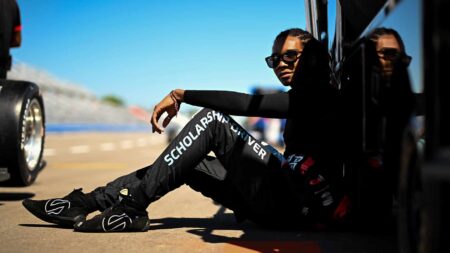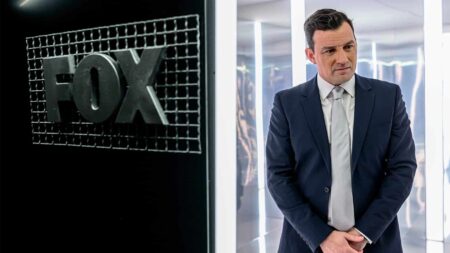
Lundgaard: McLaren can make history with F1/IndyCar double win
Christian Lundgaard is McLaren's new IndyCar star – and wants to make history by helping the team win both in F1 at Bahrain and at Long Beach Stateside on the same day
There have been moments throughout racing history where drivers have been lauded for their courage in stepping out of the cockpit rather than their acts in it. Niki Lauda at Fuji in 1976 and Alain Prost at Adelaide in ’89 both retired healthy cars in the interests of safety and, while they were questioned in the moment, time has been kinder.
IndyCar stalwart Mike Conway’s decision to quit oval racing at the end of last season could have had bigger implications than world champions pulling out of individual races. He had always had the speed but not the results and, with just one win to his name, at Long Beach in 2011, he was risking his career. After two enormous shunts at Indy and the loss of Dan Wheldon, very few people questioned his logic, but it was always going to be difficult getting drives.
Remarkably, 2013 has been his best season since graduating from F3, with a string of street circuit appearances yielding his second IndyCar win at Detroit. His LMP2 campaign with G-Drive has been up and down – disqualification from a class podium at Le Mans stung – but since then his Oreca-Nissan, shared with John Martin and Roman Rusinov, has been the car to beat. Class poles and dominant wins at São Paulo and Austin, while the OAK and Pecom squads faltered, have left the trio with an outside shot at the championship. But they need to keep winning.
There’ll be a more in-depth look at Conway’s current activities in the next issue of Motor Sport but there was something surprising from the end of that interview: his enthusiasm for Indianapolis.
“It’s so cool,” he says, “even though I don’t want to do it anymore. It’s a huge event. You need to go there and experience it, stand on the grid when all the cars are lined up as far as you can see. There’s a sea of people all the way down to Turn One and there’s such a great noise and a buzz about the place.
“During the build-up from the start of May all the way through until the end of the race, every day there are more and more people coming in and the cars are going quicker, it’s a hard feeling to replicate. Your first time there you want to experience the whole thing. Even driving into the place, as you come down the road there are these huge banners with previous winners on them, then you see the enormous grandstands behind you when you come out of the tunnel. When you get on track, you just think, ‘F***, it’s started already,’ because when you pull into the garage the fans are all so close, all day long.
“There’s a lot of tension around the place from the first day as well because the first time you get out on track you don’t know how much speed you’ve got in the car. It’s either going to be good or bad, and if it’s bad the month gets even longer… I’ve had a few long months there. It’s just the worst feeling and there’s not a lot you can do. You can go flat out all day long but if the speed’s not there, it’s not there.”
Conway started 27th in 2009 (the only year he finished the race), 15th in 2010 and 29th in 2012. In 2011, driving for Andretti, he failed to qualify.
“Your set-up might not be right, or your gearbox might not be as good as the next one, there are so many small things that can go wrong and that’s where the final little bits of speed are going to be. You can have a car that’s on a knife-edge and really fast, or a car that’s easy to drive but you can’t use it.
“Qualifying’s the longest four laps of your life. You’re consciously trying to make the car as free as possible, adjusting all the tools you have, like the anti-roll bars and the weight jacker. It’s a long old lap.
“Being on that track on your own, you almost wonder whether you’ll come back. You’re in line for qualifying, watching them file out in front of you and you’re saying to yourself, ‘Four cars to go…’ You’re strapped in, ready to go and Brian Barnhart gives you a handshake; from then you just can’t wait to see everyone again. It’s only five or six minutes but it feels like you’re coming back from somewhere.
“I’ve got great memories of Indy – and obviously some bad ones – but all in all I did enjoy it, I made a lot of friends there and I’ll miss being in the paddock. But it’s not the best thing for me.”
Conway’s first smash in 2010 resulted in a broken leg and fractured vertebrae, ending his season prematurely.
“It’s hard to say whether oval racing will ever be safe. The speeds are so high and with open wheels it’s so easy to get tangled up. In NASCAR they just bump off each other and it’s not too bad, but even those guys have huge wrecks. There’s increased circuit safety, SAFER barriers, the cars get better every year and there are a lot of ideas [to improve safety], it’s just hard to come up with the ideal solution.”
His passion for racing is clear and, as his results this season have proven, he hasn’t lost any of his speed. Conway’s in Japan for the World Endurance Championship round at Fuji this weekend, looking to continue his strong series of results with Martin and Rusinov. The odds for the championship might be long, but the momentum’s with them and their last two races have been fairly flawless. LMP2 might not get the attention that the P1 and GT categories do, but there’ll be plenty to look out for as the season winds down.
Click here for more on IndyCar

Christian Lundgaard is McLaren's new IndyCar star – and wants to make history by helping the team win both in F1 at Bahrain and at Long Beach Stateside on the same day

Louis Foster starts his IndyCar journey this weekend in St Petersburg – can he emulate other British heroes like Nigel Mansell and Dan Wheldon?

Myles Rowe has rocketed through IndyCar's junior ladder with a story like no other – he tells James Elson why this upcoming year is more important than ever

Drive to Survive star Will Buxton has made the jump across the Atlantic to front Fox's new IndyCar coverage – he explained to James Elson why he thinks the championship is the most exciting series out there